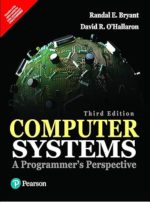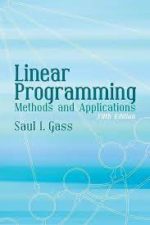-
Computer Systems: A Programmer’s Perspective
KSh 30,090.00Computer systems: A Programmer’s Perspective explains the underlying elements common among all computer systems and how they affect general application performance. Written from the programmer’s perspective, this book strives to teach students how understanding basic elements of computer systems and executing real practice can lead them to create better programs.Spanning across computer science themes such as hardware architecture, the operating system and systems software, the Third Edition serves as a comprehensive introduction to programming. This book strives to create programmers who understand all elements of computer systems and will be able to engage in any application of the field–from fixing faulty software, to writing more capable programs, to avoiding common flaws. It lays the groundwork for students to delve into more intensive topics such as computer architecture, embedded systems and cybersecurity.
-
Computer Systems
KSh 26,460.00Updated throughout with the latest updates as well as the new Pep/9 virtual machine, Computer Systems, Fifth Edition provides a clear, detailed, step-by-step introduction to the central concepts in computer organization, assembly language, and computer architecture. It urges students to explore the many dimensions of computer systems through a top-down approach to levels of abstraction. By examining how the different levels of abstraction relate to one another, the text helps students look at computer systems and their components as a unified concept.
-
Linear Programming: Methods and Applications
KSh 2,100.00“One of the best introductory books on linear programming … excellent.” — Journal of the American Statistical Association.
“A good elementary text. ”— Mathematical Reviews.
Clear and comprehensive in its coverage of the entire spectrum of linear programming techniques, this volume introduces theoretical, computational, and applied concepts. Considerations of theoretical and computational methods include the general linear programming problem, the simplex computational procedure, the revised simplex method, the duality problems of linear programming, degeneracy procedures, parametric linear programming and sensitivity analysis, and additional computational techniques. The treatment of applications covers the transportation problem and general linear programming applications, and a final part examines nonlinear programming. Numerical examples and exercises with selected answers appear in every chapter.
Useful both as a text and as a reference, this volume provides valuable help to research analysts, applied mathematicians, economists, statisticians, and others wishing to make effective use of modern programming techniques.



